
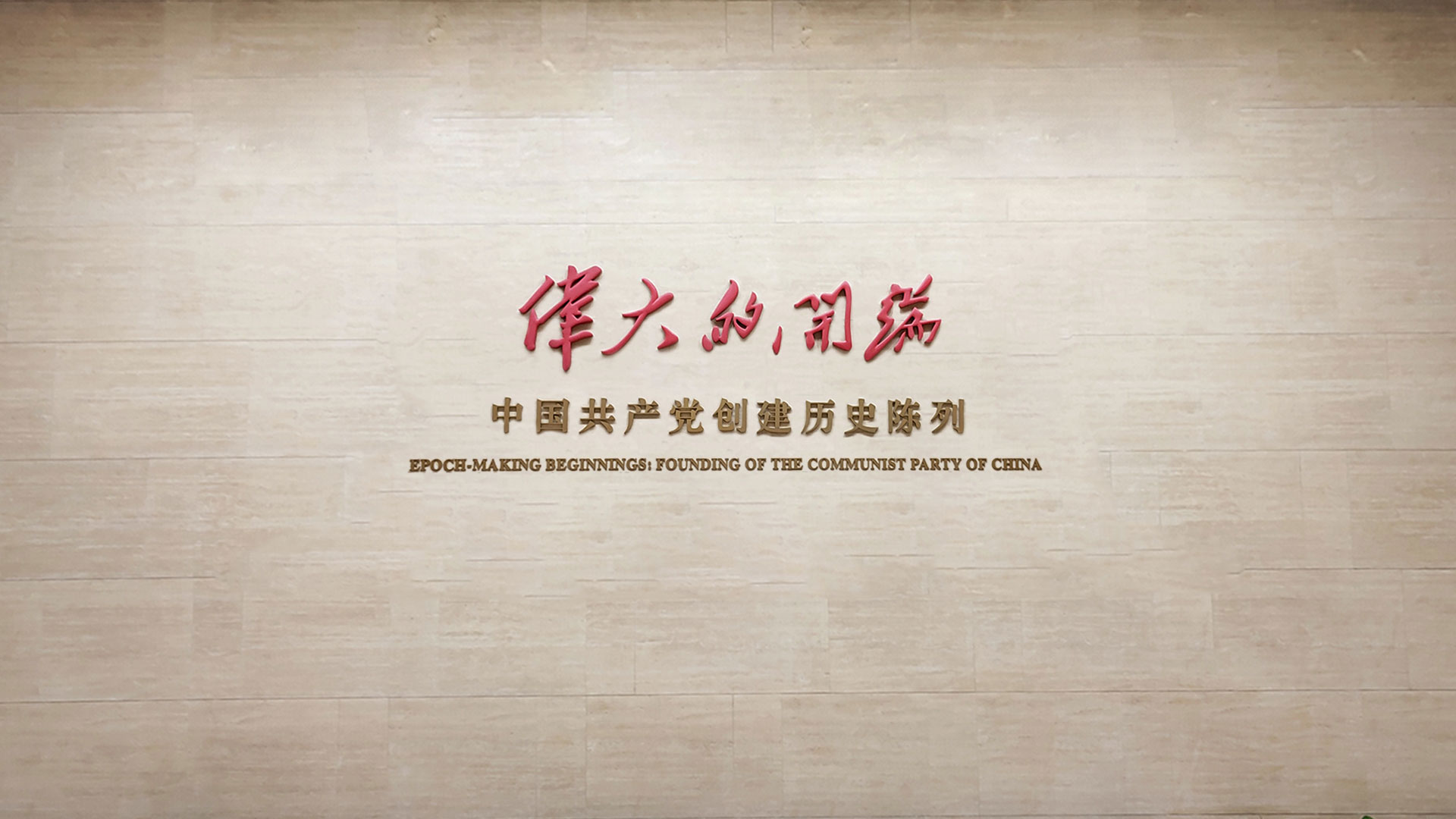
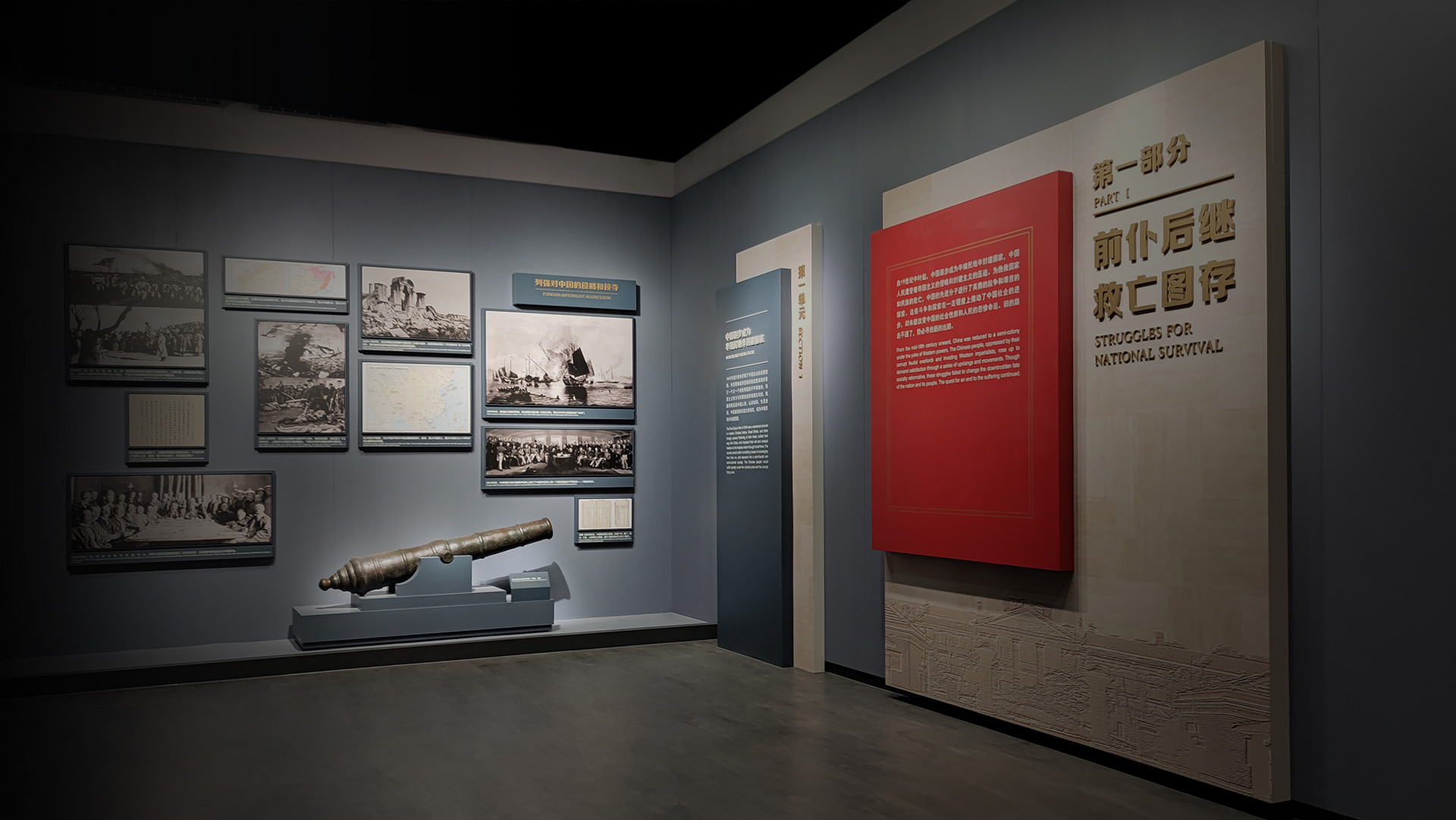
-
PART 1
From the mid-19th century onward, China was reduced to a semi-colony under the yoke of Western powers. The Chinese people, oppressed by their corrupt feudal overlords and invading Western imperialists, rose up to demand satisfaction through a series of uprisings and movements. Though socially reformative, these struggles failed to change the downtrodden fate of the nation and its people, The quest for an end to the suffering continued.PART 1STRUGGLES FORNATIONAL SURVIVAL -
SESSION Ⅰ
The First Opium War of 1840 was a watershed moment in modern Chinese history. Great Britain, and other foreign powers following at their heels, bullied their way into China, and imposed their will and unequal treaties on the hapless nation through brutal force. The country would suffer humiliating losses of sovereignty from then on, and descend into a semi-feudal and semi-colonial society. The Chinese people would suffer greatly under the colonial yoke and the corrupt Qing court.SECSION Ⅰ
DESCENT INTO
A SEMI-COLONY
-
SESSION Ⅱ
In the face of foreign invasion and an increasingly dire national crisis, Chinese intellectuals started to look to the West for new ideas and solutions, with little success. Despite failed attempts, and regardless of risks of losing their lives, they kept on exploring new avenues to rescue the nation from harsher perils.
SECSION Ⅱ
QUEST FOR
NATIONAL
INDEPENDENCE
-
SESSION Ⅲ
The 1911 Revolution put an end to over 2000 years of dynastic rule in China. However, the new-born republic failed to achieve national independence and deliver social progress. It was soon succeeded by the Beiyang Warlord Era (1912-1928), one of the darkest times in China's modern history marked by chaos, dictatorship and warlordism.
SECSION Ⅲ
1911 REVOLUTION:
SUCCESSES
AND FAILURES
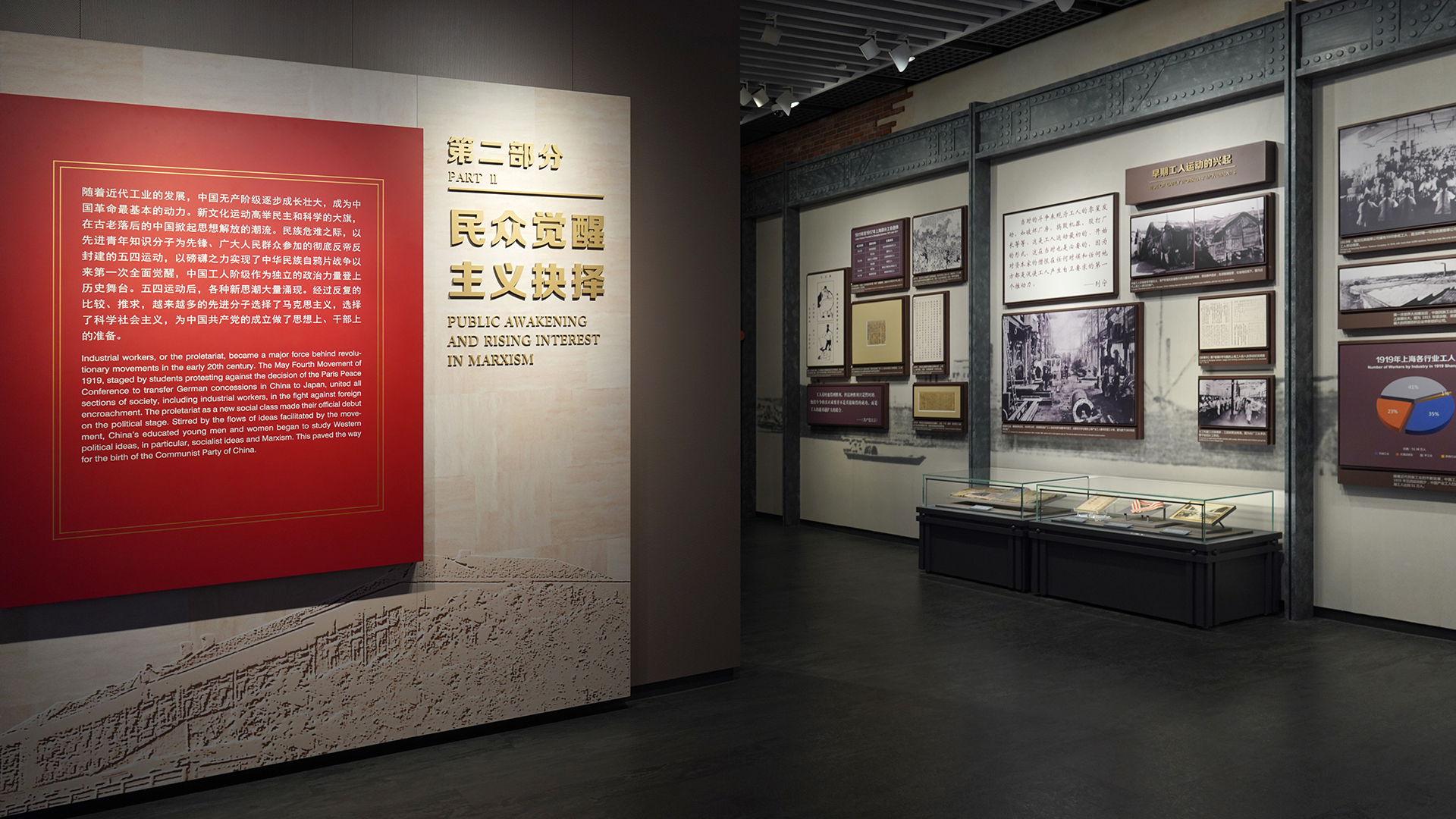
-
PART 2
Industrial workers, or the proletariat, became a major force behind revolutionary movements in the early 20th century. The May Fourth Movement of 1919, staged by students protesting against the decision of the Paris Peace Conference to transfer German concessions in China to Japan, united all sections of society, including industrial workers, in the fight against foreign encroachment. The proletariat as a new social class made their official debut on the political stage. Stirred by the flows of ideas facilitated by the movement, China's educated young men and women began to study Western political ideas, in particular, socialist ideas and Marxism. This paved the way for the birth of the Communist Party of China.PART 2PUBLIC AWAKENINGAND RISINGINTERESTIN MARXISM -
SESSION Ⅰ
The development of modern manufacturing industries established in the second half of the 19th century gave birth to a new social class, the proletarians. After the 1911 Revolution, they grew in size as indigenous businesses entered a period of rapid growth. Chinese workers suffered under the triple weight of plundering Western imperialists, exploitive capitalism and corrupt warlords from day one. They were quick to awaken to China's deepening national crisis and came to the fore in movements aimed at national rejuvenation.SECSION Ⅰ
RISE OFTHE WORKING CLASS -
SESSION Ⅱ
With reform-minded intellectuals propagating democracy and modern sciences, the New Culture Movement contributed to unprecedented enlightenment of the Chinese public. The May Fourth Movement saw the official debut of the working class as an independent social force onto the political stage. lt mobilized all sections of society in the fight against Western imperialism and the feudal establishment at home, and awakened the public to the urgency of pursuing truth, progress, and national revival. Socialist ideas started to circulate, setting the stage for New Democratic revolutions, in which the working class played a leading role.
SECSION Ⅱ
NEW DEMOCRATIC
REVOLUTIONS
-
SESSION Ⅲ
Amid the intellectual stirrings of the May Fourth Movement, China's educated young en and women began in earnest to study new ideas, in particular, socialist thought. The success of the Bolshevik Revolution of 1917 in Russia enhanced the appeal of Manxism. Young scholars began to systematically disseminate the Marxist ideology in China. More progressive intellectuals became Communist converts, laying the groundwork for the founding of proletarian organizations.
SECSION Ⅲ
SPREAD OF MARXISM
MARXISM
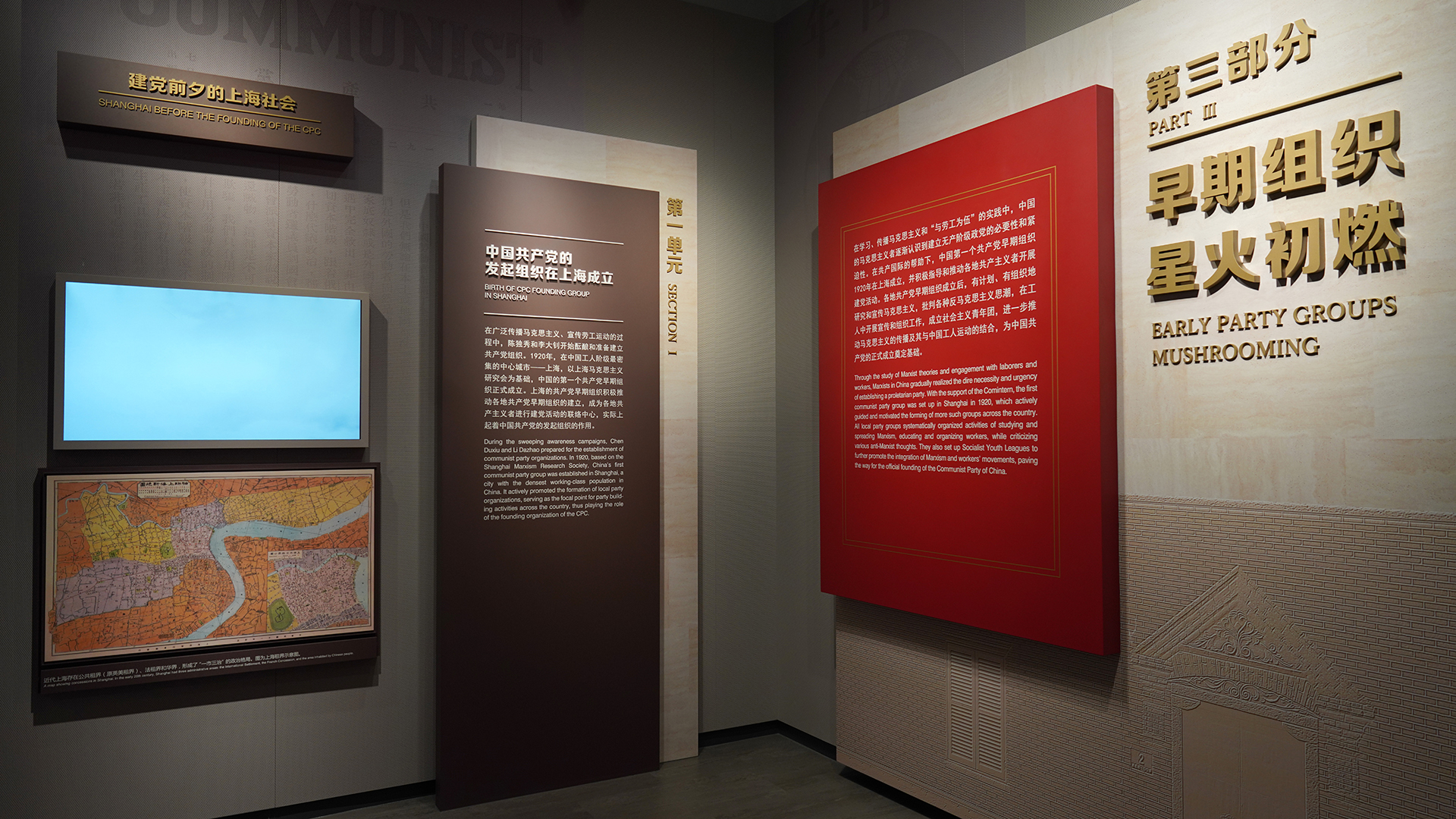
-
PART 3
Through the study of Marxist theories and engagement with laborers and workers, Marxists in China gradually realized the dire necessity and urgency of establishing a proletarian party. With the support of the Corintern, the first communist party group was set up in Shanghai in 1920, which actively guided and motivated the forming of more such groups across the country. All local party groups systemnatically organized activities of studying and spreading Marxism, educating and organizing workers, while criticizing various anti-Marxist thoughts. They also set up Socialist Youth Leagues to further promote the integration of Marxism and workers' movements, paving the way for the official founding of the Communist Party of China.PART 3EARLY PARTY GROUPSMUSHROOMING -
SESSION Ⅰ
During the sweeping awareness campaigns, Chen Duxiu and Li Dazhao prepared for the establishment of communist party organizations. In 1920, based on the Shanghai Marxism Research Society, China's first communist party group was established in Shanghai, a city with the densest working-class population in China. It actively promoted the formation of local party organizations, serving as the focal point for party building activities across the country, thus playing the role of the founding organization of the CPC.SECSION Ⅰ
BIRTH OFCPC FOUNDING GROUPIN SHANGHAI -
SESSION Ⅱ
With the liaison and promotion of the early communist party groups in Shanghai and Beijing, progressive people in Wuhan, Changsha, Guangzhou and Jinan as well as those living or studying in Japan and France established early communist party groups in succession from the autumn of 1920 to the spring of 1921. They carried out work in an organized and planned manner, further expanded the influence of Marxism, and facilitated the integration of Marxism and workers'movements, laying a solid foundation for the founding of a nationwide unified Communist Party of China.
SECSION Ⅱ
EARLY COMMUNIST
PARTY GROUPS
-
SESSION Ⅲ
Early Chinese Marxists made in-depth explorations of key issues such as what kind of party should be built and how to build the party, thus clarifying the party's essential nature, missions, organizational principles, and methods of revolution - theoretical elements that formed the bedrock of a new proletarian party. Debates against counter-Marxist forces such as reformismand anarchism catapulted a group of progressive young people onto the road of Marxism by decidedly drawing a line between scientific socialism and the bourgeois and petty-bourgeois schools of socialism.
SECSION Ⅲ
PARTY BUILDING
IDEAS AND DEBATES
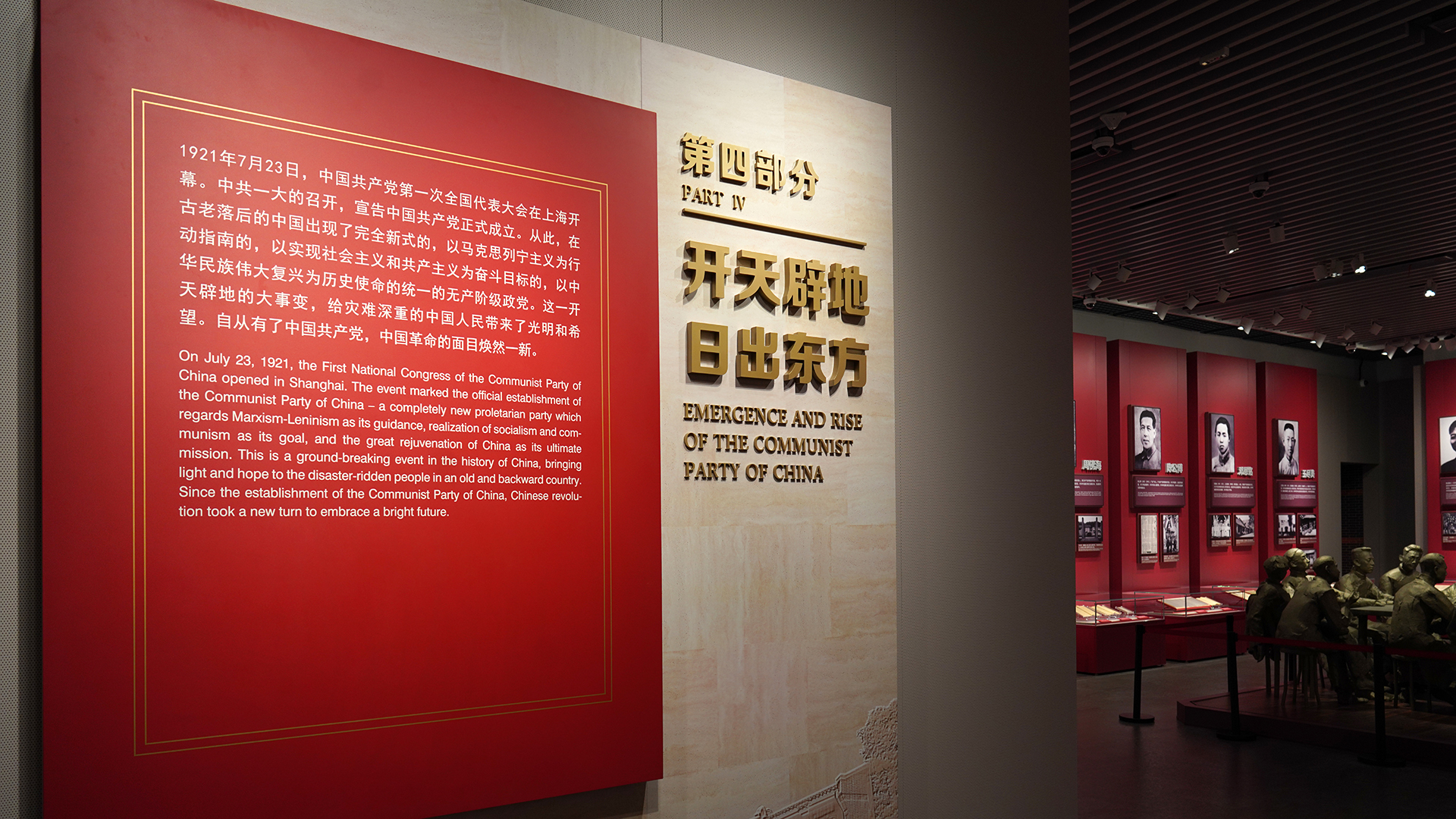
-
PART 4
On July 23, 1921, the First National Congress of the Communist Party of China opened in Shanghai. The event marked the official establishment ofthe Communist Party of China - a completely new proletarian party whichregards Marxism-Leninism as its guidance, realization of socialism and com-munism as its goal, and the great rejuvenation of China as its ultimatemission. This is a ground-breaking event in the history of China, bringinglight and hope to the disaster-ridden people in an old and backward countrySince the establishment of the Communist Party of China, Chinese revolu.tion took a new turn to embrace a bright future.PART 4EMERGENCE AND RISEOF THE COMMUNISTPARTY OF CHINA -
SESSION Ⅰ
In June 1921, representatives of the Comintern arrived in Shanghai to connect with members of the early Shanghai communist party group. After discussions, it was agreed that a national congress should be convened in Shanghai, and that the Shanghai party group would take charge of the preparations for the congress. The conference was attended by thirteen delegates from the early communist party groups in seven regions and two Comintern representatives.SECSION Ⅰ
PREPARATIONS FORTHE FIRST CPCNATTONAL CONGRESS -
SESSION Ⅱ
On July 23, 1921, the 1st CPC National Congress opened at 106 Rue Wantz in the French Concession area of Shanghai. The meeting was suspended due to a raid by the French Concession police on the night of July 30 and was then moved to a tourist boat on South Lake in Jiaxing. With the first program and resolution adopted, the Congress elected members of the CPC Central Bureau. The CPC officially came into being. Revolution was in the air.
SECSION Ⅱ
CONVENING OF
THE FIRST CPC
NATIONAL CONGRESS
-
SESSION Ⅲ
After the CPC was founded, its Central Bureau guided local party and league (China Socialist Youth League) organizations to carry out tasks. lt established publishing companies to publicize Marxism, and set up the China Labor Union Secretariat Department to lead the mass movement of workers and peasants, setting off the first climax of the Chinese workers' movement. The 2nd CPC National Congress held in July 1922 formulated the program for a democratic revolution, and it ratified the first constitution of the CPC.
SECSION Ⅲ
ACTIVITIES AFTER
THE FIRST CPC
NATIONAL CONGRESS
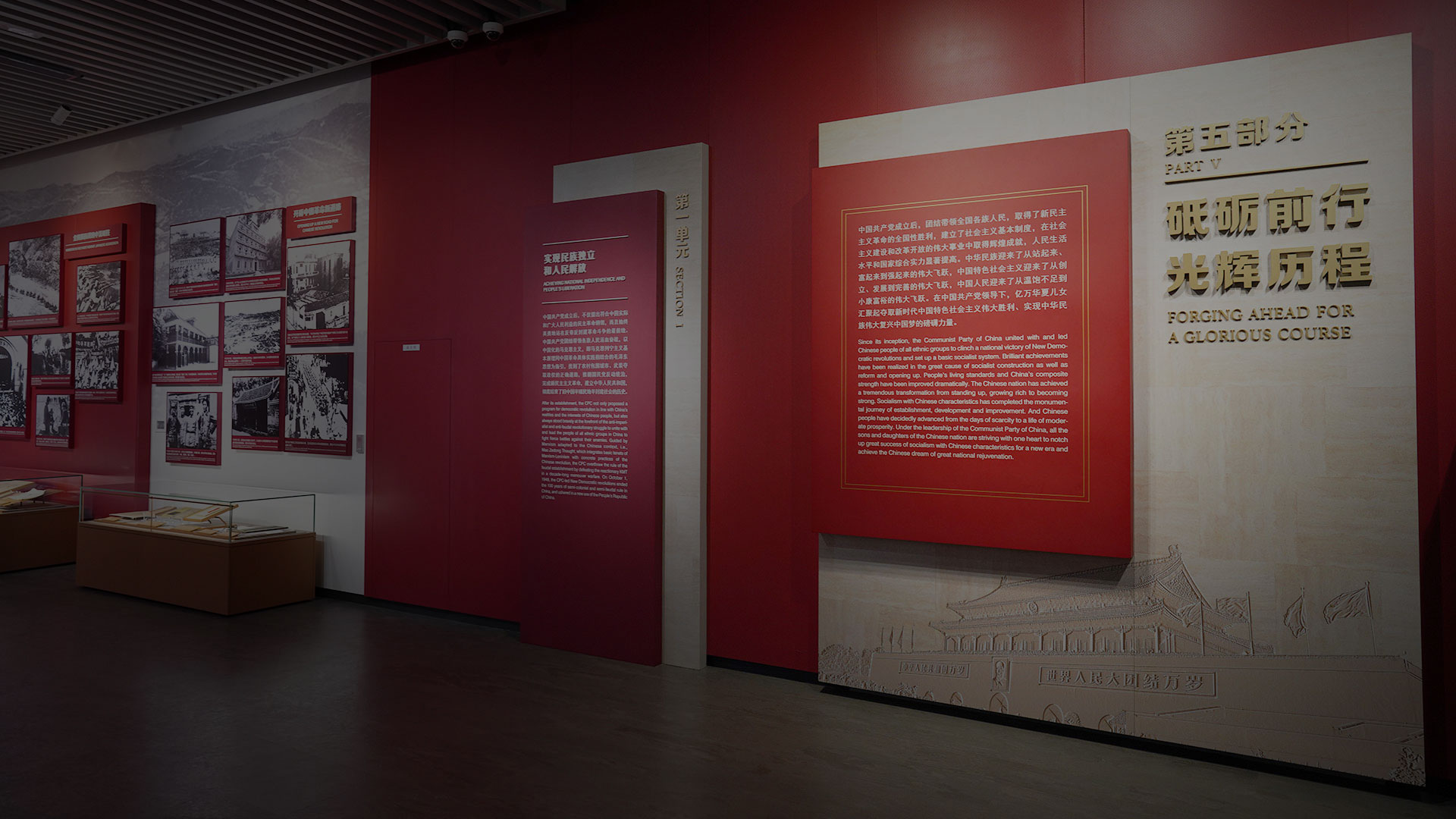
-
PART 5
Since its inception, the Communist Party of China united with and led Chinese people of all ethnic groups to clinch a national victory of New Democratic revolutions and set up a basic socialist system. Brilliant achievements have been realized in the great cause of socialist construction as well as reform and opening up. People's living standards and China's comprehensive strength have been improved dramatically. The Chinese nation has achieved a tremendous transformation from standing up, growing rich to becoming strong. Socialism with Chinese characteristics has completed the monumental journey of establishment, development and improvement. And Chinese people have decidedly advanced from the days of scarcity to a life of moderate prosperity. Under the leadership of the Communist Party of China, all the sons and daughters of the Chinese nation are striving with one heart to notch up great success of socialism with Chinese characteristics for a new era and achieve the Chinese dream of great national rejuvenation.PART 5FORGING AHEAD FORA GLORIOUS COURSE -
SESSION Ⅰ
After its establishment, the CPC not only proposed a program for democratic revolution in line with China's realities and the interests of Chinese people, but also always stood bravely at the forefront of the anti-imperialist and anti-feudal revolutionary struggle to unite with and lead the people of all ethnic groups in China to fight fierce battles against their enemies. Guided by Marxism adapted to the Chinese context, i.e., Mao Zedong Thought, which integrates basic tenets of Marxism-Leninism with concrete practices of the Chinese revolution, the CPC overthrew the rule of the feudal establishment by defeating the reactionary KMT in a decade-long maneuver warfare. On October 1, 1949, the CPC-led New Democratic revolutions ended the 100 years of semi-colonial and semi-feudal rule in China, and ushered in a new era of the People's Republic of China.SECSION Ⅰ
ACHIEVING NATIONALINDEPENDENCE ANDPEOPLE'S LIBERATION -
SESSION Ⅱ
After the People's Republic of China was founded, Chinese communists, with Mao Zedong as their chief representative, united with and led the people of all ethnic groups in the country to accomplish the most extensive and profound social changes in Chinese history, making people the masters of the country, and transforming the system of private ownership of the means of production into a socialist system of public ownership. By doing so, the CPC created a fundamental political and institutional framework for today's China. The CPC explored meticulously for paths to socialism suited to China's conditions and executed a massive industrialization program laying a solid foundation for China's development and prosperity.
SECSION Ⅱ
STRIVING TO
DEVELOP SOCIALISM
-
SESSION Ⅲ
After the 3rd Plenary Session of the 11th CPC Central Committee held in 1978, Chinese communists led by Deng Xiaoping introduced all-round reform and opening up, setting the stage for a sustained economic boom never seen before in human history. After the 4th Plenary Session of the 13th CPC Central Committee convened in 1989, Chinese communists led by Jiang Zemin steered the nation through a tumultuous period in the international politics, pressing ahead with reforms. After the 16th CPC National Congress in 2002, Chinese communists led by Hu Jintao navigated a range of major challenges, including the 2008 international financial crisis, catapulting the nation to its current position as the world's second largest economy in 2010.
SECSION Ⅲ
REFORM AND OPENING
UP TO CREATE
NEW PROSPECTS
FOR MODERNIZATION
-
SESSION Ⅳ
Since the 18th CPC National Congress held in 2012, the CPC Central Committee with Xi Jinping at its core has united people in the country under the banner of promoting socialism with Chinese characteristics. A series of new ideas and plans were put forward, including Xi Jinping Thought on Socialism with Chinese Characteristics for a New Era, the Overall Plan for Development in Five Areas, and the Four-Pronged Strategy. During this period, many long-festering problems were solved and numerous long-awaited achievements were accomplished. The CPC and the country as a whole entered a new era, heralding a promising future of prosperity.
SECSION Ⅳ
SOCIALISM WITH
CHINESE
CHARACTERISTICS
IN THE NEW ERA